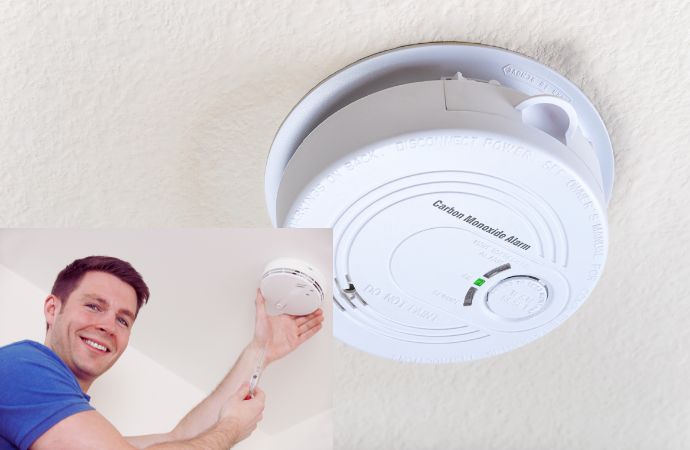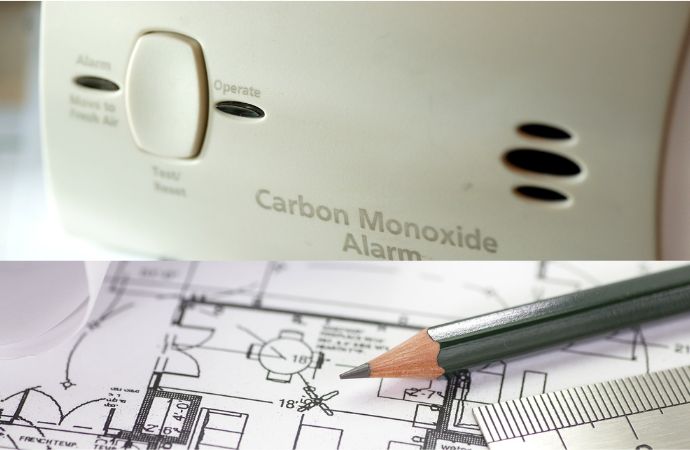“Alif Security 🌟🌟🌟🌟🌟 and team are lightning-quick when it comes to response time, getting the work done professionally with INCREDIBLE HIGH-QUALITY service and very reasonable prices.”
How Far Should a Carbon Monoxide Detector Be from a Furnace?
Proper placement of carbon monoxide (CO) detectors is critical for ensuring the safety of your home. Carbon monoxide is a colorless, odorless gas that can be lethal at high levels, making early detection crucial. One common question homeowners have is: How far should a carbon monoxide detector be from a furnace?
Important Disclaimer: While this information provides a general guide for carbon monoxide detector placement, it's crucial to consult a qualified fire alarm technician for specific recommendations in your home. Their expertise can ensure optimal detector placement for your unique layout and safety needs.

Ideal Distance from the Furnace
Carbon monoxide detectors should be placed between 5 and 20 feet away from a furnace. This distance helps to provide an early warning of a potential CO leak without the risk of false alarms that can occur if the detector is too close. Furnaces and other fuel-burning appliances can occasionally produce small amounts of CO during normal operation, which might trigger the detector unnecessarily if placed too near.
In smaller homes where maintaining a 20-foot distance isn't feasible, aim to position the detector as far from the furnace as possible within the available space. Always prioritize the placement to ensure the detector is effectively monitoring for CO without being susceptible to frequent false alarms.
Additional Tips for Placing CO Detectors
Besides the distance from the furnace, there are several other important considerations for placing CO detectors throughout your home:
-
Install a Detector on Each Level: Every level of your home should have a CO detector, including the basement. This is particularly important for levels with fuel-burning appliances and outside sleeping areas.
-
Height Placement: Place the detector at least 5 feet above the ground but avoid ceiling height. This helps in catching CO-laden air, which tends to rise but can also remain at lower levels depending on the room’s air flow.
-
Avoid Obstructions: Ensure the detector is not covered or blocked by furniture, drapes, or other household items.
-
Keep Away from Airflow Disturbances: Do not place the detector near doors, windows, fans, vents, ducts, or cooking appliances. These areas can affect the accuracy of the detector.
-
Digital Readouts: If your CO detector has a digital display, place it at around eye level to easily read the CO levels.
-
Prevent False Alarms: Keep the area around the detector well-ventilated and avoid placing it too close to fuel-burning appliances to prevent unnecessary alarms.
-
Manufacturer's Instructions: Always follow the specific placement instructions provided by the detector’s manufacturer, as different models may have varying requirements.

Specific Distance for Various Appliances
To ensure your alarm only sounds when necessary, it is important to place your CO detectors at least 15 feet away from any fuel-burning appliance. This includes:
- Gas-powered kitchen stoves/ovens
- Gas dryers
- Furnaces
- Gas water heaters
- Fireplaces
By maintaining this distance, you reduce the likelihood of false alarms while ensuring that any harmful CO emissions are detected in time.
Proper placement of carbon monoxide detectors is a key step in protecting your home and family from the dangers of carbon monoxide poisoning. By placing detectors 5–20 feet away from your furnace and following the additional tips for optimal placement, you can ensure effective monitoring and early detection of this silent threat. Always adhere to manufacturer guidelines and ensure detectors are installed on each level of your home, particularly near sleeping areas and fuel-burning appliances.
For maximum safety, always consult a fire alarm technician for advice and opt for professional installation of carbon monoxide detectors. Proper placement by experts ensures reliable detection and peace of mind. Don’t take chances with your family’s safety—contact a professional today!







